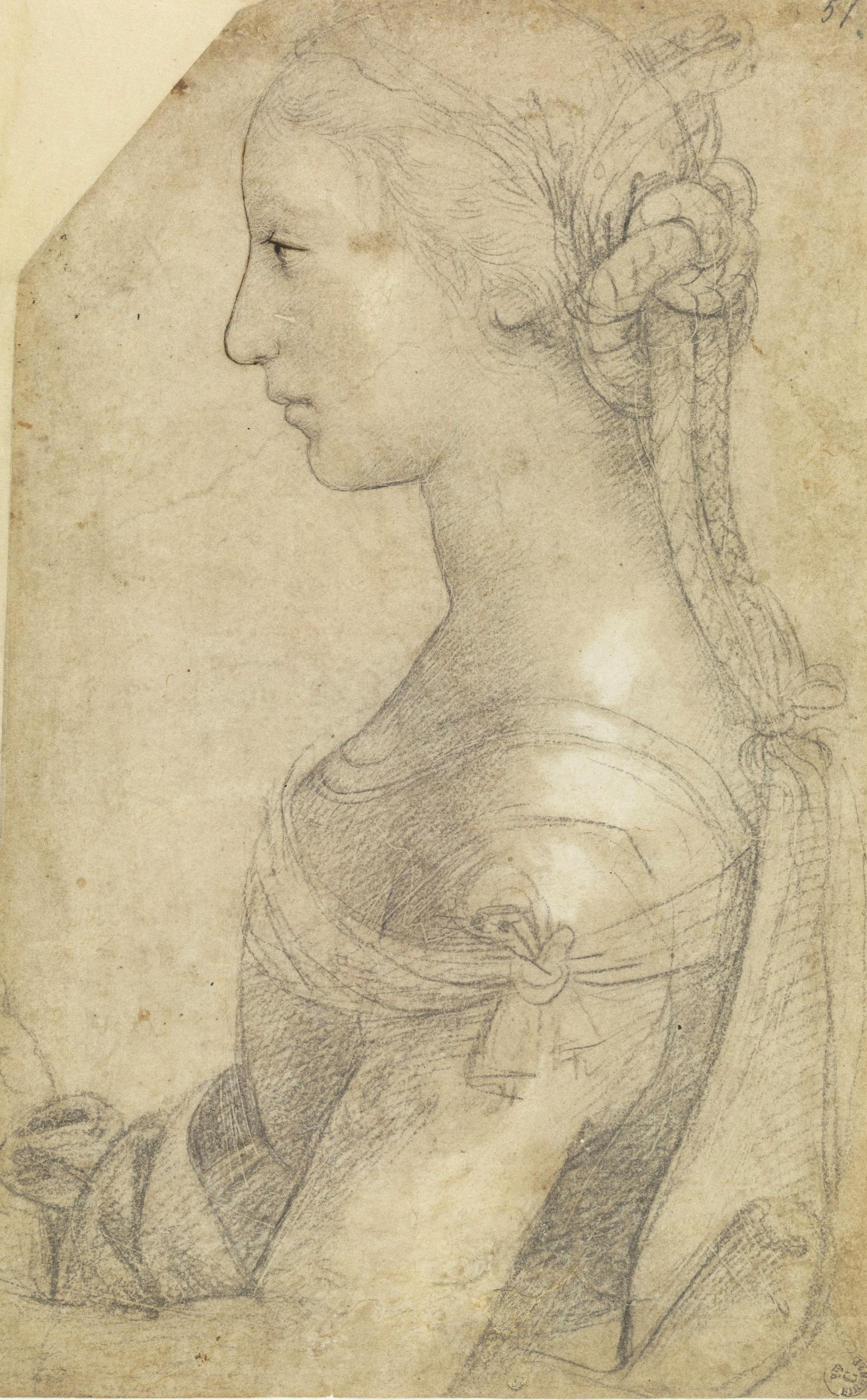Half-length portrait of a young woman in profile
Raffaello Sanzio [Raphael] (Urbino, 1483 - Rome 1520)
On the recto, top right, in black pencil ‘57.’; on the verso, top left, in black pencil, in nineteenth century handwriting ‘57’; on the verso, bottom, in black pencil, in nineteenth century handwriting ‘57 esp già Raffae[llo] […] o Timoteo / ed ora Piero di Cosimo?’; on the verso, bottom right, in black pencil, in modern handwriting ‘57 E’
This is one of the most exquisite drawings by the young Raphael and dates to the period when the artist moved to Florence between 1504 and 1505. The work, previously ascribed to the Florentine sculptor Mino da Fiesole, was inspired in both subject and composition by the famous female portraits painted in the second half of the fifteenth century by Piero del Pollaiolo and Domenico del Ghirlandaio, reinterpreted in a more three-dimensional and sculptural style.
While characteristics of Raphael's artistic individuality can already be noted, the work still features elements of the Umbro-Marchigiana style of sketching matured during his seminal collaboration with Perugino, while the geometric, almost modular regularity of the head and bust seem to recreate the established models of Urbino artistic tradition. As well as influences from Piero della Francesca, the work appears to replicate the essential and elegant shapes of the head-and-shoulders portraits painted by Francesco Laurana at the end of the fifteenth century for the court of Federico da Montefeltro, which Raphael would have most likely admired.
On the verso, there is a vague trace in pen of the painting on the recto, carried out by an unknown artist.
